No matter how hard we try, sleep is something most IT Administrators don't get enough of. Evening calls and emails from executives, significant events, incidents, and an often-crazy personal and professional schedule all contribute to the lack of sleep.
But the administrators managing complex multi-vendor Collaborate subscriptions for a large enterprise can now relax while we take care of the subscription and license management-related complexities on their behalf and provide data when they need it most.
So, what have we actually changed? In our July 2022 release, we improved the subscription management workflow in IR Collaborate – Cloud. These improvements will make it easier for businesses to better understand their Collaborate licenses and how they use and allocate them.
We have revamped the Payments and Billing screen in the Collaborate Admin Centre. There are now simplified data fields and visual alarms on the page to provide more insight into the number of Collaborate licenses purchased, used, and allocated.
Since employee user experience is a priority in the hybrid workplace, organizations often purchase more than one UCaaS tool to ensure their users are satisfied and to assure business continuity. They also purchase more licenses than they actually need, to allow for their future user growth. While most licenses do get allocated and are actively used, remaining licenses will need to be allocated later. In some UCaaS vendor tools, getting this usage data may be time-consuming. And if the admins are asked to compare it with another UCaaS vendor license for a particular Calendar Year, achieving this outcome may be even more complicated for them.
For example, Cool Company has 18,000 staff and expects to grow in 2022. They have 18,000 Zoom licenses and have purchased 20,000 IR Collaborate Cloud licenses. While 18,000 of the Collaborate licenses will be allocated, let’s assume 500 Zoom users are not using Zoom. Hence no data is being captured by Collaborate for those 500 users. As a result, only 17,500 of the 20,000 purchased Collaborate licenses were used.
The breakdown of these metrics will now be visible from the Payments and Billing page for administrators to see so that they can clearly understand how the licenses are being used and when they will expire. In addition, if the Cool Company (as they are so cool!) has another 20,000 Microsoft Teams licenses and 19,800 of them are used in that month, admins can now easily see these trends over a period for various UCaaS tools in our platform.
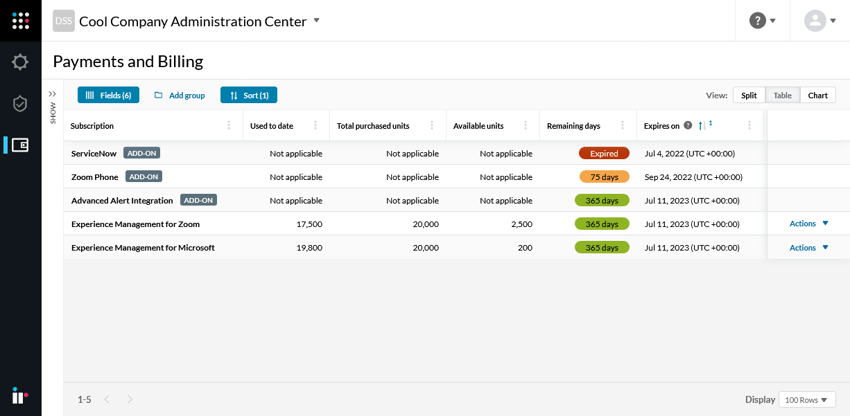 Payments and Billing Screen
Payments and Billing Screen
Visual alarms and badges
Previously, customers could only see how many Collaborate licenses had been purchased and when they expire. In this July 2022 release, they can now see the number of 'Remaining Days' with a visual alarm to make it easier to identify which licenses are expiring, and when, so that they can plan for upcoming renewals. Further, license subscriptions that are purchased as add-ons to core Collaborate packages will have an 'Add-on' badge next to them, making it easier to differentiate them without knowing the specific commercial arrangements.
Usage Trend Analysis - 'your usage data your way'
Updates to the subscription management filters allow you to see license usage by subscription type, day, month, or year in graphs. Usage Data is retained for up to 5 years, from July 2022. The graphical visualization of the usage over time enables you to conduct trend analysis on license usage. In addition, we also call out change % for a day, month, or year.
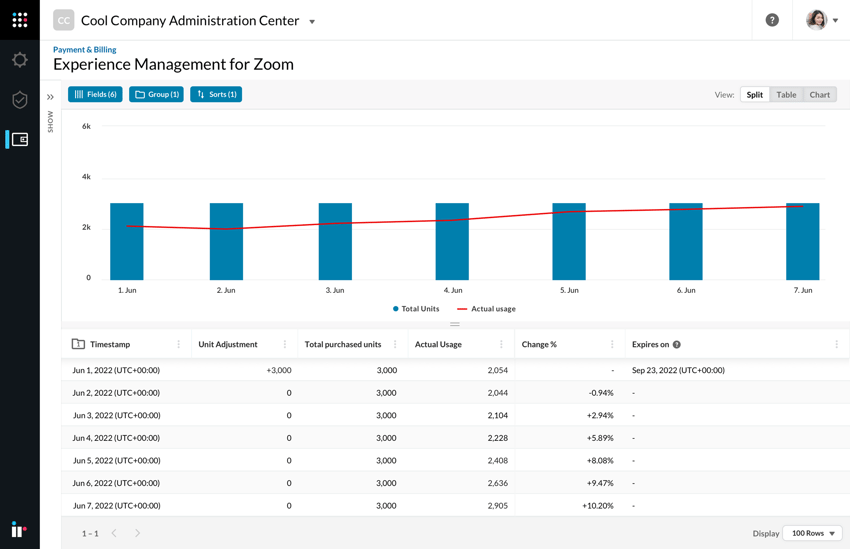
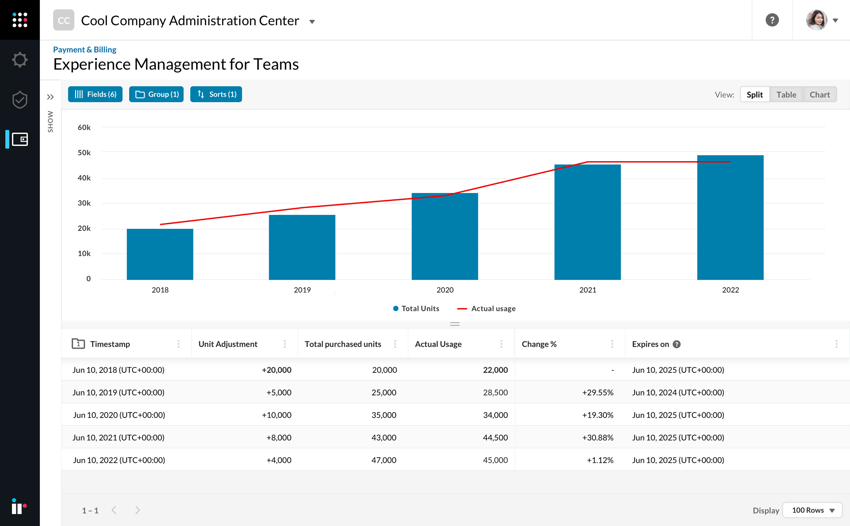 Last 5 years usage
Last 5 years usage
These usage insights can influence and facilitate:
- Proactive discussion with the UCaaS vendors
- Other internal IT investment decisions
In a nutshell, you will have more understanding of the UCaaS tool adoption in your environment which will allow you to take better informed, data-driven decisions.
Purchase Trend Analysis - 'your purchase data your way'
We now keep audit records of all IR Collaborate license purchases and their expiry dates for up to 5 years from July 2022. In June 2027, we'll be able to show you what licenses and how much was purchased back from July 2022.
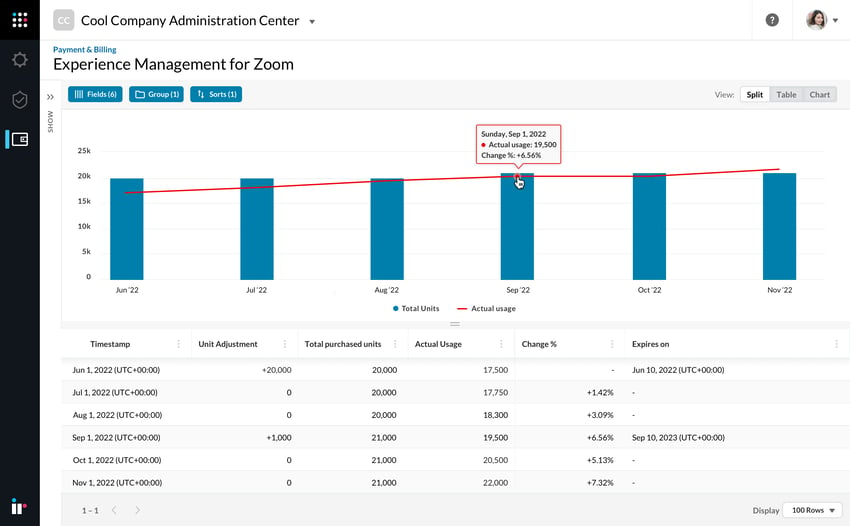 Last 6 months with purchase data
Last 6 months with purchase data
Pro Users
Curious pro-users can do more with this data – you can compare it with the previous period and corresponding period or even find a simple moving average. On top of this, you can group by Day, Month, Quarter, year or any custom period you are after. So, with this, along with finding the license usage for a Calendar year, you can also compare the previous year to understand the usage and adoption more precisely.
These capabilities are platform-wide features, and almost all the data presented in Collaborate Cloud can be sliced and diced with these powerful options to reach the desired business outcome. We are sure these features will help you 'go the extra mile' to find that little nugget you are after.
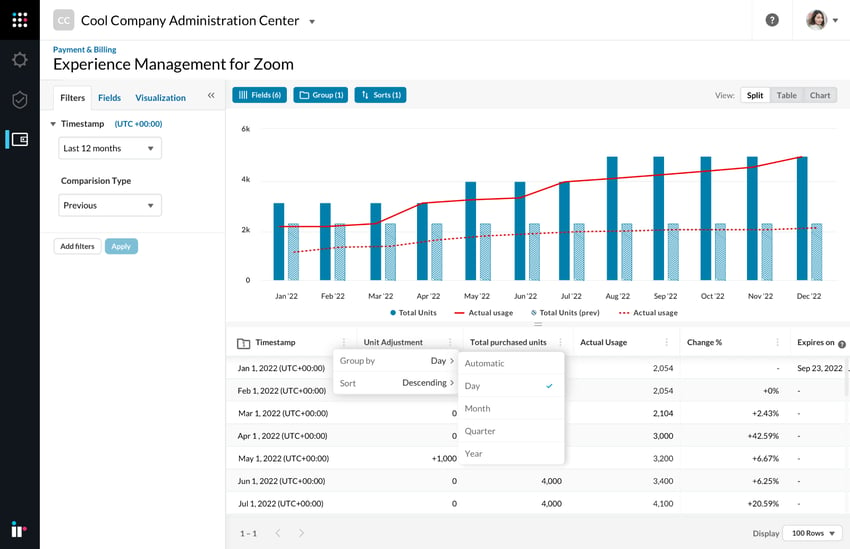 License usage
License usage
Managed Service Providers (MSP) Updates
Auto-allocation and manual allocation of licenses help Service Providers better manage their Collaborate licenses across the customer organizations they support.
Auto Allocation allows Service Providers to automatically allocate purchased licenses to their customers as users are added to their customer accounts. Once auto-allocated, expiry dates and any additional unit allocation will be automatically applied and reflected in their customers' subscription details, saving administrators from manually updating these details per customer, which can be very time-consuming. Auto allocation will help customers draw down the licences from the Service Provider Licence pool.
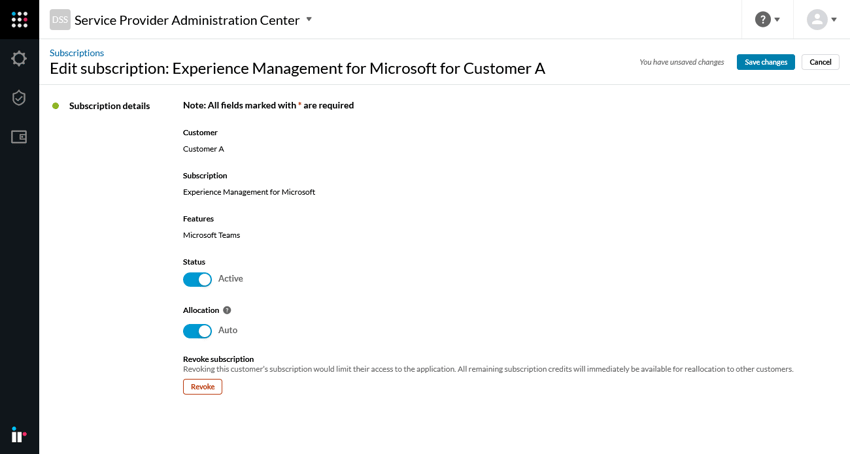 Auto Allocation
Auto Allocation
While manual allocation already existed in Collaborate, we've improved how you can manually allocate licenses across your customer accounts. You can now use manual allocation to assign the total number of licenses required for each customer, rather than allocating the additional licenses required (and having to do maths on the side). For example, your customer who already has 10,320 licenses assigned to their account and wants to increase to 17,540 licenses. Instead of calculating the difference manually and adding 7,220 licenses (as you do today), you can now enter the total of 17,540 licenses to be allocated to that customer and we will take care of updating the existing subscriptions.
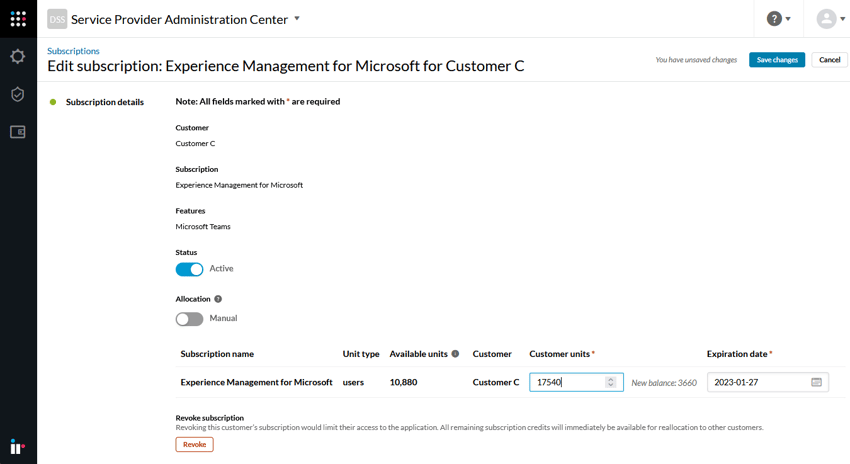 Manual Allocation
Manual Allocation
We know that one solution doesn’t fit for all! Hence, we have given the option to the Service Provider Administrators to either auto allocate or manually allocate and limit different expiry dates for your customers per subscription based on your requirements.
We also know that change is inevitable and particularly in a complex UCaaS environment it is unavoidable, and we are here to support you. You can update your customer subscriptions any time from manual to auto or vice versa without any hassle.
Rest assured that, our email notifications have been updated to suit all these tailor-made complex scenarios and conditions. We will email the respective admins if there is a need to review your allocations at any time.
Customer Subscriptions
Service Provider Customers also have a Customer Subscriptions page where they can manage all their customer subscriptions. We have updated the screen with the ‘remaining days' field with visual alarms and an add-on badge for add-on subscriptions allocated to your customers. On this page, you can easily differentiate whether you have manually allocated or auto allocated the licenses to your customers.
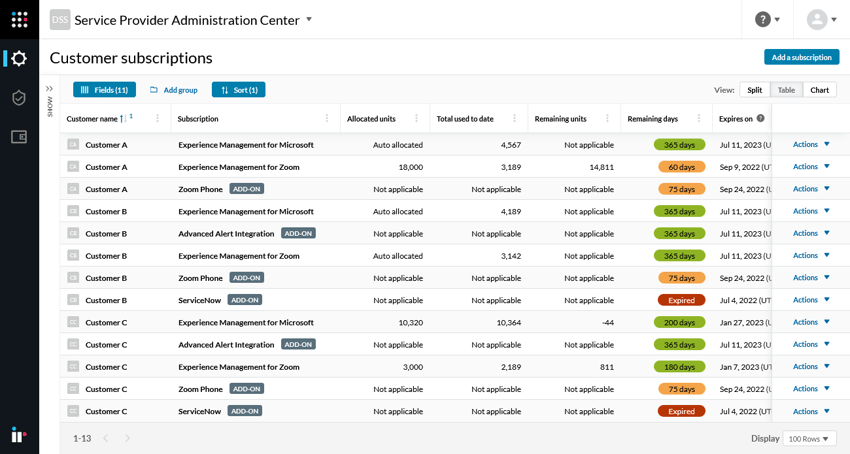 Customer subscriptions
Customer subscriptions
Moreover, all the improvements we have discussed above about the Payments and Billing page are available to the Service Providers as well.
A whole lot – isn’t it? 😊
When operating at scale, getting insight into how you support and manage each customer helps plan out customer renewals, identify upsell and cross-sell opportunities, optimize resource usage and track KPIs.
Finally, every slight improvement significantly impacts us when deployed at scale, so we're very excited about helping our customers be more efficient and knowledgeable about their Collaborate usage!
Watch our webinar on Making license management easy for Service Providers



